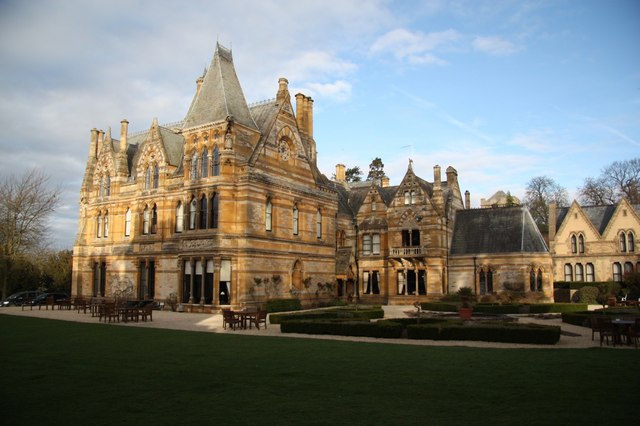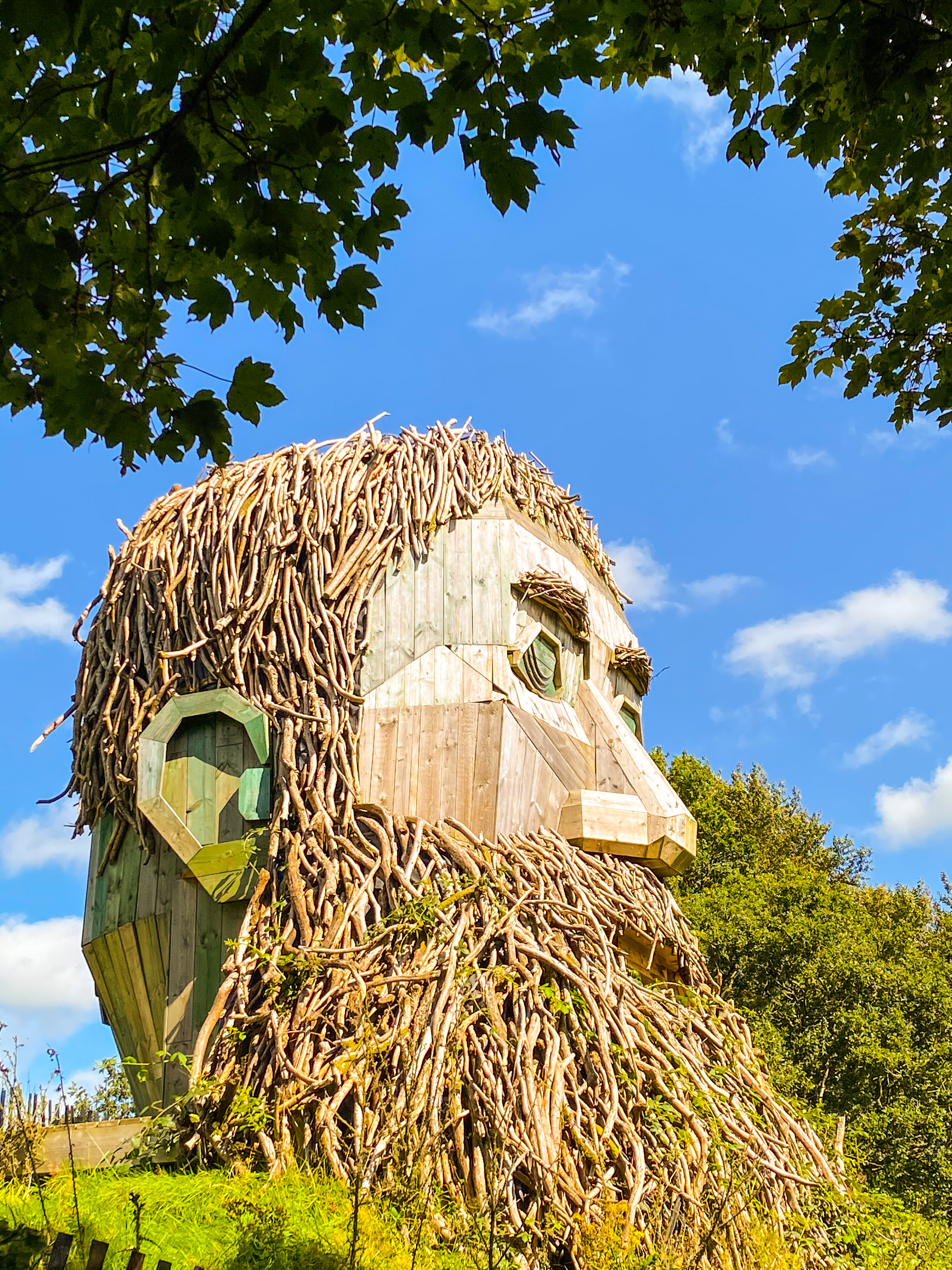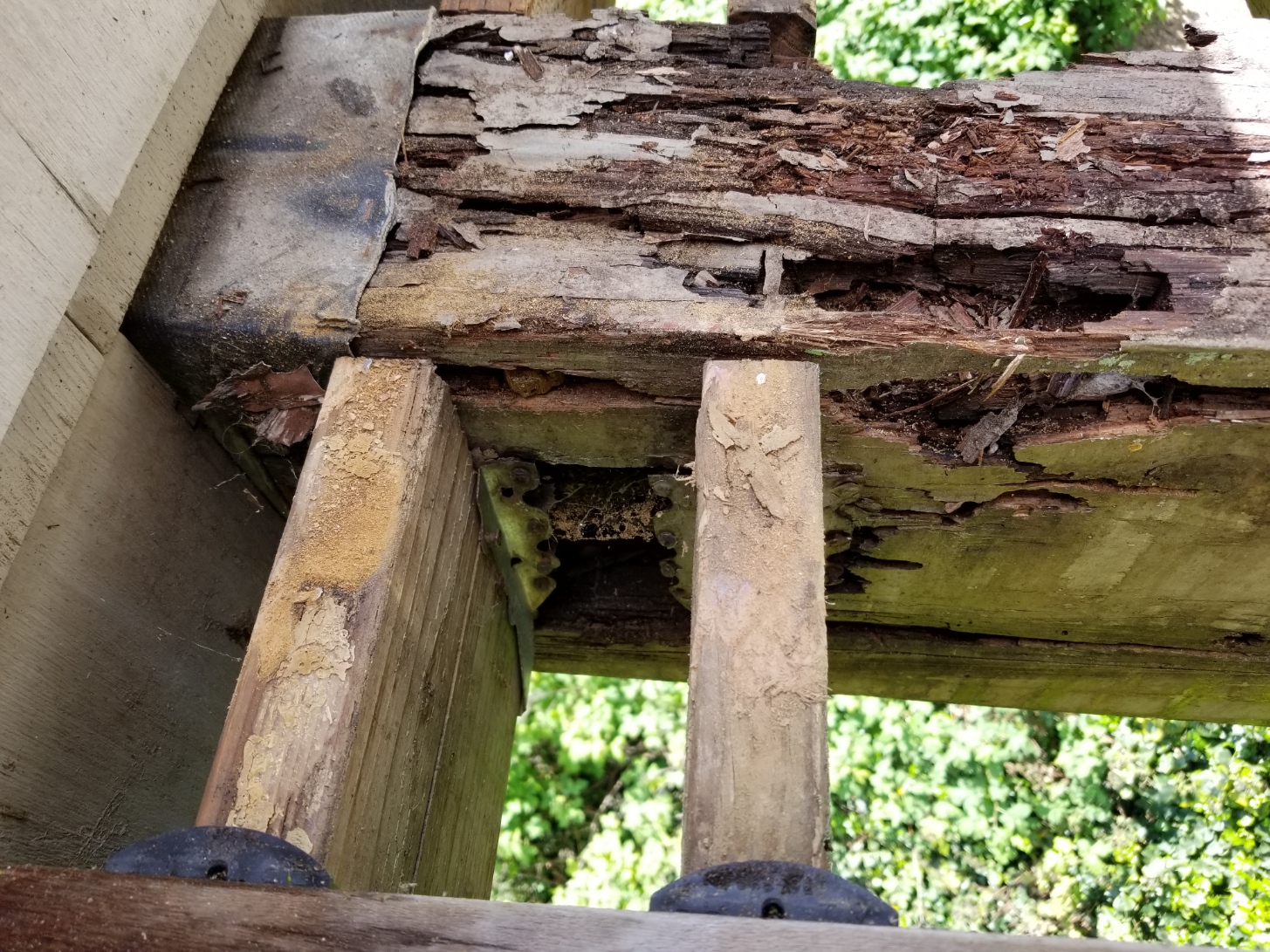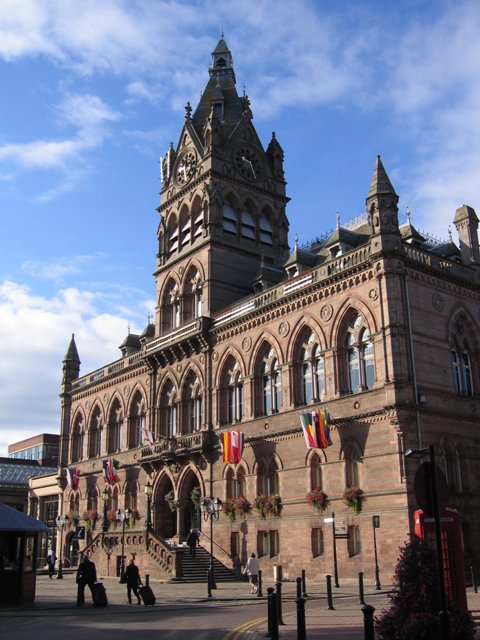|
Rossmore Castle
Rossmore Castle, also known as Rossmore Park, was a castle on the outskirts of Monaghan in County Monaghan, Ireland. It was built in the Gothic style in 1827 and was the seat of the Barons Rossmore, but fell into disrepair in the 1940s when the family moved to Camla Vale, and was demolished in the 1970s. History The building was a 19th-century country house built in the style of a castle. It was originally built for The 2nd Baron Rossmore in 1827 in the Gothic style by the Irish architect William Vitruvius Morrison. The building was dominated by a large square tower with turret and crow-stepped battlements, and had a series of gables and oriel windows. It was extended and remodelled in 1858 by the Irish architect William Henry Lynn. There was rivalry between Lord Rossmore and the Shirleys of Lough Fea, and they competed for many years as to who could boast the largest room in County Monaghan; as a result, the drawing room at Rossmore was extended on five occasions, and the ... [...More Info...] [...Related Items...] OR: [Wikipedia] [Google] [Baidu] |
Rossmore
Rossmore may refer to: * Rossmore, Johannesburg, South Africa * Rossmore, West Virginia, United States Australia *Rossmore, New South Wales, a suburb of Sydney * Rossmore, Queensland, a neighbourhood in the Gympie Region United Kingdom *Rossmore, a suburb of Ellesmere Port Ellesmere Port ( ) is a port town in the Cheshire West and Chester borough in Cheshire, England. Ellesmere Port is on the south eastern edge of the Wirral Peninsula, north of Chester, south of Birkenhead, southwest of Runcorn and south of ..., Cheshire *Rossmore, a townland in Belleek, County Fermanagh * Rossmore, Dorset, a suburb of Poole {{geodis ... [...More Info...] [...Related Items...] OR: [Wikipedia] [Google] [Baidu] |
Evelyn Shirley (1788–1856)
Evelyn John Shirley (26 April 1788 – 31 December 1856), was a British politician. Background Shirley was the eldest son of Evelyn Shirley, son of the Hon. George Shirley, younger son of Robert Shirley, 1st Earl Ferrers. His mother was Phillis Byam Wollaston, daughter of Charlton Wollaston. He was educated at Rugby School later Matriculating to St John's College, Cambridge in 1807. He inherited Ettington Park, making some alterations to it in 1824. Political career After having served as High Sheriff of Warwickshire for 1813–14 and High Sheriff of Monaghan for 1824–25, Shirley was returned to Parliament for County Monaghan in 1826, a seat he held until 1831. He later represented Warwickshire South between 1836 and 1849. Family Shirley married Eliza, daughter of Arthur Stanhope, in 1810. They had several children, including Evelyn Shirley, also a politician, and Arthur Shirley (1813–1877), a Major-General in the Army. Shirley died in December 1856, aged 68. His wi ... [...More Info...] [...Related Items...] OR: [Wikipedia] [Google] [Baidu] |
Castles In County Monaghan
A castle is a type of fortification, fortified structure built during the Middle Ages predominantly by the nobility or royalty and by Military order (monastic society), military orders. Scholars debate the scope of the word ''castle'', but usually consider it to be the private fortified house, fortified residence of a lord or noble. This is distinct from a palace, which is not fortified; from a fortress, which was not always a residence for royalty or nobility; from a ''pleasance'' which was a walled-in residence for nobility, but not adequately fortified; and from a fortified settlement, which was a public defence – though there are many similarities among these types of construction. Use of the term has varied over time and has also been applied to structures such as hill forts and 19th-20th century homes built to resemble castles. Over the approximately 900 years when genuine castles were built, they took on a great many forms with many different features, although s ... [...More Info...] [...Related Items...] OR: [Wikipedia] [Google] [Baidu] |
Rossmore Forest Park
Rossmore Forest Park is a national forest park located in County Monaghan in Ireland run by the Irish States forestry organisation, Coillte. It is situated approximately 5km outside Monaghan town and has its main entrance on the R189 Threemilehouse/Newbliss Road. History The park was the site of Rossmore Castle which was demolished in the 1970s. It was the home of Lord Rossmore and the Rossmore family who were the local landlords of the area during the 18th and 19th centuries. The park's also includes a number of historical sites including a wedge tomb and a court tomb. Wildlife The park is home to a variety of native mammal species, including otters, pigmy shrews, and five species of bat. The park hosts migratory birds, both over winter and the summer. Amenities The park is primarily used for recreational purposes and has several walking trails across 320 hectares. Amongst its trees and plant life are Californian redwoods planted at various locations. One of these R ... [...More Info...] [...Related Items...] OR: [Wikipedia] [Google] [Baidu] |
Dry Rot
Dry rot is wood decay caused by one of several species of fungi that digest parts of the wood which give the wood strength and stiffness. It was previously used to describe any decay of cured wood in ships and buildings by a fungus which resulted in a darkly colored deteriorated and cracked condition. The life-cycle of dry rot can be broken down into four main stages. Dry rot begins as a microscopic spore which, in high enough concentrations, can resemble a fine orange dust. If the spores are subjected to sufficient moisture, they will germinate and begin to grow fine white strands known as hyphae. As the hyphae grow they will eventually form a large mass known as mycelium. The final stage is a fruiting body which pumps new spores out into the surrounding air. In other fields, the term has been applied to the decay of crop plants by fungi. In health and safety, the term is used to describe the deterioration of rubber, for example the cracking of rubber hoses. Discussion '' ... [...More Info...] [...Related Items...] OR: [Wikipedia] [Google] [Baidu] |
Second World War
World War II or the Second World War, often abbreviated as WWII or WW2, was a world war that lasted from 1939 to 1945. It involved the vast majority of the world's countries—including all of the great powers—forming two opposing military alliances: the Allies and the Axis powers. World War II was a total war that directly involved more than 100 million personnel from more than 30 countries. The major participants in the war threw their entire economic, industrial, and scientific capabilities behind the war effort, blurring the distinction between civilian and military resources. Aircraft played a major role in the conflict, enabling the strategic bombing of population centres and deploying the only two nuclear weapons ever used in war. World War II was by far the deadliest conflict in human history; it resulted in 70 to 85 million fatalities, mostly among civilians. Tens of millions died due to genocides (including the Holocaust), starvation, ma ... [...More Info...] [...Related Items...] OR: [Wikipedia] [Google] [Baidu] |
Lord Lieutenant Of Monaghan
This is a list of people who have served as Lord Lieutenant of County Monaghan. There were lieutenants of counties in Ireland until the reign of James II, when they were renamed governors. The office of Lord Lieutenant was recreated on 23 August 1831. Governors * Edward Blayney, 1st Baron Blayney 1604– (died 1629) * Cadwallader Blayney, 7th Baron Blayney c.1713– * Charles Talbot Blayney, 8th Baron Blayney c.1735– * William Fortescue, 1st Earl of Clermont: Beatson's ''Political Index'' (1806) vol. IIIp. 373 1775–1806 * Warner Westenra, 2nd Baron Rossmore: –1831''The Royal Kalendar'' for 1831p. 389 * Charles Powell Leslie: 1802–1831Stephen FarrellLESLIE, Charles Powell (?1767-1831), of Glasslough, co. Monaghan.in ''The History of Parliament: the House of Commons 1820-1832'' (2009). Lord Lieutenants * The 2nd Baron Rossmore: 7 October 1831 – 1836 * The 3rd Baron Rossmore: 13 June 1836 – 6 December 1858 * Charles Powell Leslie: 1858 – 26 June 1871 * The 1st Ea ... [...More Info...] [...Related Items...] OR: [Wikipedia] [Google] [Baidu] |
Derrick Westenra, 5th Baron Rossmore
Derrick Warner William Westenra, 5th Baron Rossmore (7 February 1853, Dublin, County Dublin, Ireland – 31 January 1921, Rossmore Park, County Monaghan, Ireland), known as The Hon. Derrick Westenra until March 1874, was an Anglo-Irish noble, soldier, author and Orangeman. Biography The second son of The 3rd Baron Rossmore and Josephine Julia Helen (née Lloyd), he was educated at Rugby. Commissioned a lieutenant in the Monaghan Militia, he resigned effective 4 December 1872, when he was made a sub-lieutenant in the 9th Lancers, replacing the controversial Sub-Lieutenant Tribe. On 28 March 1874, upon the death of his elder brother Henry in a riding accident, Derrick succeeded as The 5th Baron Rossmore, of Monaghan in the County of Monaghan, in the Peerage of Ireland and as The 4th Baron Rossmore, of the County of Monaghan, in the Peerage of the United Kingdom. His brother had been an officer of the 1st Life Guards, and Derrick was transferred to that regiment to replace him, ... [...More Info...] [...Related Items...] OR: [Wikipedia] [Google] [Baidu] |
Edward VII
Edward VII (Albert Edward; 9 November 1841 – 6 May 1910) was King of the United Kingdom of Great Britain and Ireland and Emperor of India, from 22 January 1901 until his death in 1910. The second child and eldest son of Queen Victoria and Prince Albert of Saxe-Coburg and Gotha, and nicknamed "Bertie", Edward was related to royalty throughout Europe. He was Prince of Wales and heir apparent to the British throne for almost 60 years. During the long reign of his mother, he was largely excluded from political influence and came to personify the fashionable, leisured elite. He travelled throughout Britain performing ceremonial public duties and represented Britain on visits abroad. His tours of North America in 1860 and of the Indian subcontinent in 1875 proved popular successes, but despite public approval, his reputation as a playboy prince soured his relationship with his mother. As king, Edward played a role in the modernisation of the British Home Fleet and the reorganis ... [...More Info...] [...Related Items...] OR: [Wikipedia] [Google] [Baidu] |
William Henry Lynn
William Henry Lynn (1829–1915) was an Irish-born architect with a practice in Belfast and the north of England. He is noted for his Ruskinian Venetian Gothic public buildings, which include Chester Town Hall (completed 1869) and Barrow-in-Furness Town Hall (completed 1886). Career In 1846 Lynn was articled to Sir Charles Lanyon in Belfast; under Lanyon he prepared the drawings for the original building housing Queens College, Belfast. He and Lanyon formed a partnership in 1854; in 1860, with Charles' son John Lanyon as junior partner, they incorporated as Lanyon, Lynn and Lanyon. The partnership dissolved in 1872, when Lynn struck out on his own. For their first joint projects (1855), Lynn and the elder Lanyon produced bank buildings at Newtownards, County Down, and at Dungannon, County Tyrone, which are two of the earliest Irish examples of the Venetian Gothic style that was being championed by John Ruskin. In Belfast the firm produced urbane Italianate commercial structu ... [...More Info...] [...Related Items...] OR: [Wikipedia] [Google] [Baidu] |
Maynard Sinton
William Maynard Sinton JP (1 February 1860 – 31 December 1942) was High Sheriff of County Armagh, an Ulster Unionist County Councillor for Armagh and industrialist. Sinton was the eldest son, and heir, of Thomas Sinton of Laurelvale House. His father founded the family linen firm of ''Thomas Sinton & Co. Ltd.'' ( flax spinners). Maynard Sinton attended school at Kendal, Westmoreland and at Newtown School, Waterford. Sinton's uncle was the linen manufacturer John Sinton owner of the Ravarnette Weaving Company; his cousin, a grandson of the same John Sinton, was the Victoria Cross winner John Alexander Sinton. He continued to manage the firm following his father's death and took up residence aBallyards Castle Armagh. Sinton married, on 16 March 1905 at Tandragee, Myra Atkinson, of Park View, Tandragee, daughter of William H. Atkinson, solicitor and sometime agent to the Duke of Manchester; J. Charters Boyle, JP was best man. The couple had two children, *B ... [...More Info...] [...Related Items...] OR: [Wikipedia] [Google] [Baidu] |
William Vitruvius Morrison
William Vitruvius Morrison (1794 – 16 October 1838) was an Irish architect, son and collaborator of Sir Richard Morrison. Life He was born at Clonmel, County Tipperary, second son of Sir Richard Morrison (1767–1849) and Elizabeth Ould, a granddaughter of the celebrated physician and author Sir Fielding Ould. His middle name derives from the first century B.C. Roman architect Marcus Vitruvius Pollio. Sir Richard headed a successful private architectural practice and was an architect at Trinity College, Dublin. He joined his father's practice in 1809. In 1821 he made an extensive tour of Europe, including visits to Rome and Paris. Upon his return, he built up a successful practice, but later his health broke down. After a second visit to the continent he died in his father's house at Bray, County Wicklow, on 16 October 1838 and is buried in Mount Jerome Cemetery, Dublin. Works Morrison designed a number of works with his father, including Baronscourt, County Tyrone (from 1835) ... [...More Info...] [...Related Items...] OR: [Wikipedia] [Google] [Baidu] |






.jpg)

